Rodrigo Moran: Fighting for a better El Salvador then and now
Rodrigo Moran always wanted to change his country for the better. He graduated high school dreaming of becoming president of El Salvador. Moran, 30, isn’t in office yet, but he continues to work to create positive change for the country’s most vulnerable communities and the young people who live there.
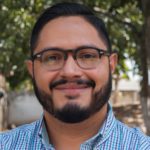
A founding member of the El Salvador chapter of the Youth Against Violence movement (Jovenes Contra la Violencia in Spanish), Moran and his colleagues catapulted the topic of violence prevention to the forefront of the country’s political dialogue and into the homes, streets and community centers of high-crime neighborhoods across the country. The movement is currently in seven Central American countries, but when he joined in 2010 it was just getting off the ground.
Today, Moran oversees innovative technology-based solutions to the country’s development challenges as part of CREA Consultores El Salvador, a Creative Associates International subsidiary.
We sat down to ask Moran about his early years of activism, his storied but young career, and his vision for the youth of his country.
What was the country like growing up when you were young?
There were a lot of the same challenges we’re facing today, just a little less drastic. Today, I think that we’re in the middle of a country-wide crisis that fluctuates between being really dark and really hopeful.
Growing up, I remember seeing how the violence grew. When I was a teenager, I was mugged a couple of times, and it felt awful, but it didn’t feel as unsafe as it feels now. We live in a constant state of paranoia. Now, having a bird’s eye view or things, I see the magnitude of the problem.
I think that seeing the reality through movements like Youth Against Violence made me realize how big the challenges of our country were, and I discovered that my passion lies in social justice.
How did you hear about Youth Against Violence and what made you want to get involved?
Me and a couple of friends had created an initiative called El Salvador 180° with the purpose of supporting vulnerable communities. We saw this call on Facebook that was very cryptic. It was an “expectation campaign” that read: “Are you tired of the situation? Do you want to do something to address this? ¡Hagamos algo pues!” We went!
It was a call that the USAID-funded, Creative-implemented Alianza Joven Regional project put out for youth organizations to start brainstorming on how to create a movement of youth against violence, like the one in Guatemala. After that event, our organization was one of the founding organizations of the Youth Against Violence movement in El Salvador.
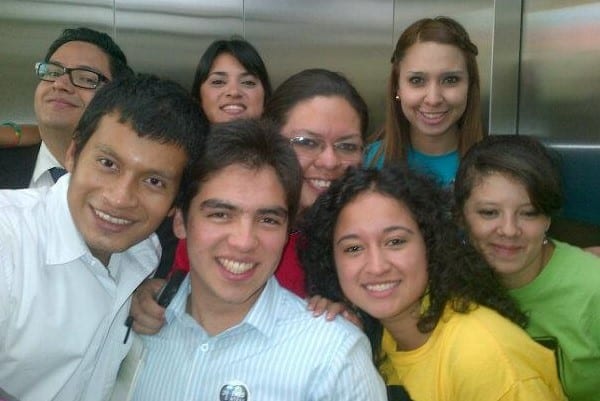
What was your role with the group?
I was the National Coordinator of the El Salvador chapter, and I was in charge of coordinating all the different projects and liaising between the El Salvador chapter and the other chapters of the Central American Youth Against Violence movement. I also represented the organization in different forums locally and internationally.
My main task was to coordinate, with the support of the Alianza Joven Regional team, the consolidation of hundreds of violence prevention dialogues that we held across the country and put that into a series of recommendations for violence prevention policy that made it to the Legislative Assembly.
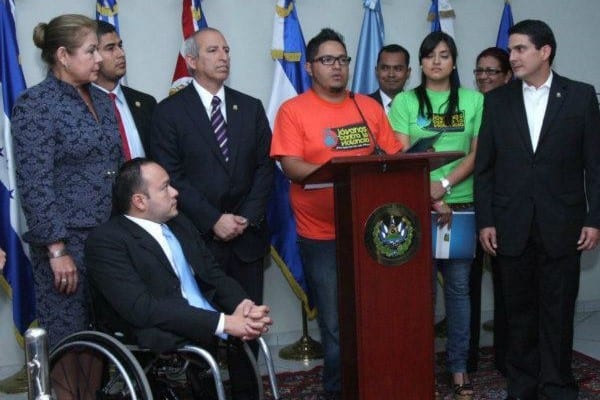
How did the recommendations of the Youth Against Violence movement influence the country’s approach to violence?
The emphasis on violence prevention is bigger today. I wish they had followed more of the recommendations, specifically increasing the budget for violence prevention and reducing repressive police measures. They have increased it but not at the pace we wanted for a bigger change.
It’s funny because violence prevention seems like such a commonsense thing, but at the time crime and violence was rampant and people didn’t know exactly what we were talking about. Today we’re just scratching the surface of secondary and tertiary violence prevention, which we did emphasize back then 10 years ago. It’s interesting to look back and see how things could have been a little different if violence prevention was made a priority.
But I know the movement is still going. It’s a long struggle. It’s a marathon, not a sprint.
What was your biggest achievement as a member of the Youth Against Violence movement?
My biggest achievement was working with all the different Central American Youth Against Violence movements. When I started there was only the Guatemalan movement. Then came the El Salvador movement, and then we expanded to Honduras, Nicaragua, Costa Rica, Panamá and Belize.
The biggest accomplishment I can point to is the signing of the Central American Youth Against Violence movement charter with representatives from the Central American Integration System and youth. That felt like a big step toward a more peaceful region.
I think that Central America is really overlooked in many instances. It is such a rich region culturally and ethnically. The things I learned from my peers in the Youth Against Violent movement sparked my passion for Central America as a region.
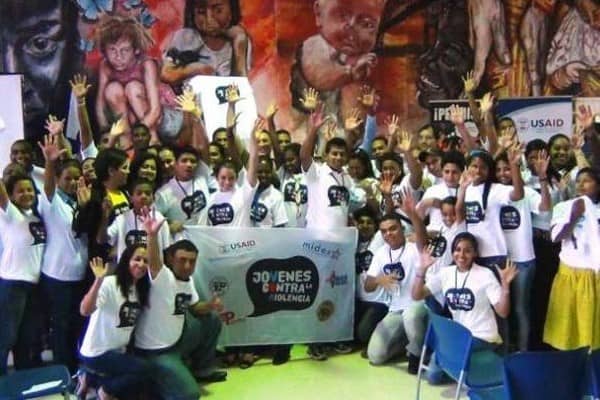
How did you and your peers get policymakers and other adults to take you seriously?
I think it was our drive. The fact that we were a novel organization with a new style of communication also helped. Non-profits and even youth-led organizations and movements were still pretty traditional in in the way they did things, and they stuck to protocol. We didn’t.
We had bright colored shirts we wore even to official events. We held creative events at unusual locations mixing people who wouldn’t otherwise get together; for example, police officers and former gang members, politicians and TV personalities playing soccer to raise awareness about the importance of violence prevention. We wanted to get things done.
We kept reminding the government officials and adults that they were also youth at some point. One of our coolest campaigns was at a Central American Heads of State meeting in Panama. We had found pictures of all the presidents when they were young and made masks out of cutouts of their faces to remind them that they were young at some point as well.
That was the biggest message we sent: It’s not just the youth that are between ages of 15 and 30 right now, everyone has been young. When you realize that the challenges you faced when you were young shaped who you are as an adult, it’s a really powerful thing. That’s why we emphasize working with young people, because what they experience will shape the way a country turns out in the next generation.
And there’s also the numbers: youth between 15 and 29 were the main perpetrators of violence and the biggest group of victims as well.
Costa Rican President Laura Chincilla recognized the Youth Against Violence movement at a meeting in 2013:
Tres presidentes, una vicepresidenta, y varios cancilleres escuchamos y recibimos de Jóvenes contra la Violencia recomendaciones valiosas.
— Laura Chinchilla M. (@Laura_Ch) February 20, 2013
Were there any youth you met in your work who went from being involved in the problem to being part of the solution?
The biggest example I can think of is one of our colleagues from the Guatemalan Youth Against Violence movement. He was one of the founding members of the Guatemalan movement and, when I met him, he seemed like the sweetest guy. His eyes resembled the ones of a kid, full of hope and ingenuity.
We became friends and after a few months of knowing him, I realized that he had a dark backstory and had been involved in gang activities since he was 13, when he learned to handle a gun.
His family was abusive, and he never really felt like he belonged until the gang started offering him what he was lacking at home. He lived that life for a long period of time.
After a really dark experience of being beaten by police and left to die, he promised God that he would turn his life around if he survived. And fast forward this number of years and he’s mentored hundreds if not thousands of kids on violence prevention issues and positive youth development across Guatemala. I remember his energy being the driver for the rest of his peers and it was so contagious.
How did your experience with the movement help you get to you where you are today?
I can say with 100 percent confidence that Youth Against Violence was instrumental to who I am today in so many ways. That’s where I learned that my passion was social impact and specifically giving youth opportunities to thrive.
And there’s another thing: I went full circle. I was a volunteer at one of Creative’s USAID projects, and then when I wanted to pursue my master’s studies in international development, the director of that project became a mentor and friend. He told me to look for opportunities to go study in the U.S. and guided me to apply to the Fulbright program, which I got.
In my graduate studies at Brandeis University in Massachusetts, I focused on international development and did my master’s thesis on violence prevention in Central America, talking a lot about our experience with the movement and even citing some of the Creative’s projects in Central America. As a graduate student, I did my internship at Creative in 2015.
After I graduated, I got a chance to do a consultancy with Creative, and then I worked full time at the HQ and now in El Salvador at one of the first Creative subsidiaries.I can thank the Youth Against Violence movement for driving me to become a part of the Creative family.
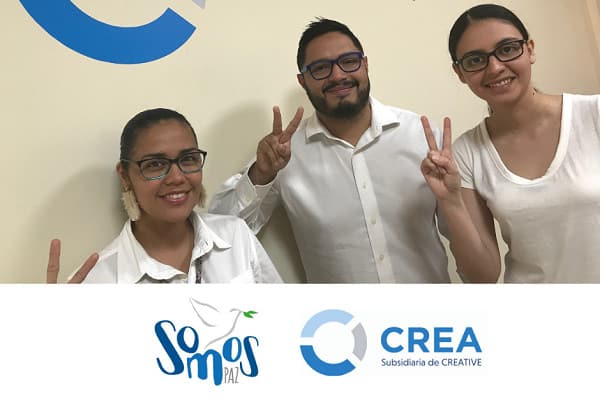
What advice would you give to youth in El Salvador who are dealing with crime and violence and don’t know where to go next?
It’s really hard to give them advice without giving them resources so that they can thrive. But I think that the biggest advice is to understand that you are a valuable person and that there is a world of opportunities out there that the circumstances don’t allow you to see. I know many of these youth are facing real situations of vulnerability, economic hardship and other barriers. Other barriers are imposed by society – society telling them that they’re not worth it, that they’re not valuable and can’t do anything beyond belonging to a gang.
If they knew they had a lot more potential, the system would collapse on itself. I would tell them: “Try to explore your potential and look for positive role models that can teach you how life’s not easy, in fact life is really hard, but if you pursue your passions, despite the punches, you can achieve excellence.”

